Riley Adams's Blog, page 140
February 11, 2014
Choosing Our Mystery’s Murderer
By Elizabeth S. Craig, @elizabethscraig
Mystery writers that I’ve met tend to fall into a couple of different groups—writers who have picked their killer before they start writing their story (or early in their draft) and those who decide by the end of the book who the killer will be.
I’m a fan of picking my murderer at the end of the book. The only problem is the fact that I’ve (fairly recently) started outlining. When I outline, I lay out the murderer…but I leave it open to change. For my Penguin books, however, the outline goes to my editor so that she has an opportunity to weigh in. I’ve changed the killer a couple of times for my editor and once I dramatically changed a character’s personality and manner in order to keep the character as the murderer.
My editor and I agree that we want the murderer to be a surprise to as many readers as possible. Although some readers always seem to guess the killer’s identity.
My considerations when choosing the murderer:
Will the readers guess this killer easily?
Does this choice make sense? Is the motive believable enough?
Are there enough clues pointing to this choice to keep the mystery fair?
Does this character play a big enough role in the book to make the mystery fair?
Even if the answers to one or more of these questions is no, I might venture ahead with my plan—but I’d make revisions to make it work. I can ramp up the motive or add an additional motive. I can tweak the character’s personality to make it seem as though he has a quick temper or is especially sensitive to criticism, or is overprotective of family members. I can add clues and distract from those clues. And I can add scenes to make the character play a larger, more vital role in the story.
I’ve usually already included one surprise earlier in the book—I murder the most likely suspect halfway through the book. Out of my 4 or 5 suspects, one ends up dying and another will be the murderer. I throw out red herrings to suggest other suspects as the murderer and work to make the red herrings fair instead of frustrating. I have the sleuth recognize them as false leads before going on too long.
Another (large) red herring can be made by misstating the true motive in the case. Maybe your sleuth has been focused on financial gain but the real motive is revenge. Or a crime of passion. Or misplaced self-defense. This can be a useful way to distract attention from your murderer.
Reasons I’ve changed a murderer for my editor:
I changed the murderer once because my editor felt the killer (the victim’s husband) was the most-likely choice. Sadly, in real life most people are killed by those closest to them.
I’ve changed a murderer once because my editor felt the character was too unlikeable…and that readers would guess she was the killer because they wanted her to be the killer.
It might sound difficult to have to change the killer (especially in a completed draft, which I’ve done on several occasions), but it isn’t. After all, all the suspects have equal motive, means, and opportunity…I just shift elements around so that the red herrings become clues. And, for that to happen, I need to drop the clues more carefully than I did the red herrings. So I might have a distraction occur in the scene right after placing the clue—maybe there’s an argument between two other characters. Maybe the sleuth immediately discovers a red herring that she thinks is much more important than the real clue she just stumbled across. Maybe there’s even another dead body. At any rate, switching the killer is a pretty easy fix.
If you write mysteries, have you ever changed the murderer’s identity? How do you select the killer for your books?
Image: MorgueFile: Pippalou
The post Choosing Our Mystery’s Murderer appeared first on Elizabeth Spann Craig.
February 9, 2014
When to Hire a Professional
by L. Diane Wolfe, @SpunkonaStick
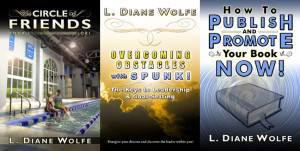 Self-publishing has become a very attractive venture for writers these days. It’s now much easier to send a book out into the world without the help of a publisher.
Self-publishing has become a very attractive venture for writers these days. It’s now much easier to send a book out into the world without the help of a publisher.
When you self-publish a book, you take on a whole new role – business owner. All of the duties and responsibilities of a publishing house now fall on your shoulders. Some of these things an author can do with the proper skills and training. Often time is a big factor, and when you are a one person band, there’s only so much you can do.
It’s important to know when to hire a professional. It can make the difference between a shoddy book and a great book. Because it doesn’t matter how great you are as a writer – if everything else is second rate, no one will buy your book.
There are a few areas where you need to weigh the pros and cons – do you do it yourself or hire a professional:
1 – Editing
The one area where self-published authors need to seek outside assistance is editing. No matter how good a writer, you are too close to your work to properly edit it. Critique partners can find most of the major mistakes, especially when it comes to the storyline, pacing, and continuity. But a professional editor is a must if you want your work polished and shined. There are several levels of editing, from basic line edits to full revisions, and each writer will need to decide the extent of the edit needed.
2 – Formatting
This one comes down to time, money, and the willingness to learn. Basic ebook formatting for sites such as Amazon is not difficult to learn, especially with so many tutorials online. Smashwords also has a great style guide for their site, although it’s easy to mess up their strict formatting requirements. With ebooks, you have to decide if you have the time to learn to do it right or if it would be simpler to hire someone to format for you so you can focus on writing and promotions.
Formatting for print is trickier, and it’s easy for a self-published author to just do it in Word. But if you want to add a lot of flair to your book, including images, and you want the text properly justified, etc., you’ll need a program like InDesign. Again, there is a sharp learning curve, and the program isn’t cheap. If you’re looking for more than just a basic style print book, you may want to hire a formatter.
3 – Cover Art & Design
Most writers realize that while they are great writers, they are not great graphic designers. If you have training in this area and are really good with Photoshop, you can design your own cover art. What you have to remember is that your cover will be competing with millions of covers – it has to look professional and catch reader’s eyes. And if you want print books, will you be able to create the entire wrap-around design? Professional illustrators and book cover designers aren’t cheap, but they can create a cover that will sell books and compete with the big publishers.
4 – Book Trailers
There are some great tutorials online. Making a book trailer can be very low cost. It can also look low budget if you cut too many corners. As with the book cover, if you are comfortable using the program and are willing to put some effort into it and purchase the images and music from reputable places, then it’s definitely something you can do on your own. But if you couldn’t splice together two scenes to save your life, you might want to hire out. A cheap trailer is not better than none at all.
5 – Promotional Materials
This includes bookmarks, flyers, postcards, brochures, etc. All authors should have bookmarks, even if their book is ebook only. And the nicer the bookmark, the more likely people will be to save it. If you can properly lay one out in PhotoShop, front and back, and with all the information, then do it. Otherwise, find a graphics designer. That bookmark represents you and your book. And it’s even more important that a business card looks professional. You want to make a good impression.
6 – Book Tours
Book tours can be set up through a tour company or you can set up your own. If you are connected online and willing to search even farther to find the best sites, then setting up your own makes sense. Online, it always works best if you have a relationship with someone. If you aren’t connected and are pressed for time, you may want to hire someone to set up a tour for you.
Always ask for references or to see samples of someone’s work before hiring. Make sure you understand the terms, the cost, the timeframe, and that you are both on the same page.
And if you’re doing it yourself, make sure you have the time and tools to do it right!
L. Diane Wolfe
Professional Speaker & Author
Known as “Spunk On A Stick,” Wolfe is a member of the National Speakers Association. She conducts seminars on book publishing, promoting, leadership, and goal-setting. Print and ebook formatting, along with author consultation, are services she offers on her website. She is the author of seven books, including How to Publish and Promote Your Book Now and a NA/YA series, The Circle of Friends. Wolfe travels extensively for media interviews and speaking engagements, maintains numerous websites & blogs, and contributes to several other sites and newsletters.

www.spunkonastick.net - website
http://www.circleoffriendsbooks.blogspot.com - blog
https://twitter.com/SpunkOnAStick - Twitter
https://www.facebook.com/l.diane.wolfe - Facebook
The post When to Hire a Professional appeared first on Elizabeth Spann Craig.
February 8, 2014
Twitterific Writing Links
by Elizabeth S. Craig, @elizabethscraig
Twitterific links are fed into the Writer’s Knowledge Base search engine(developed by writer and software engineer Mike Fleming) which has over 23,000 free articles on writing related topics. It’s the search engine for writers.
I’m hoping that there is no overlap or repetition in this particular edition of Twitterific. I’m having technical issues, unfortunately, and had to switch from SocialOomph to HootSuite for tweet scheduling. And now I’ve apparently broken HootSuite! The downloading of my archived tweets didn’t work (I have a ticket started with them), so this is my best attempt to reconstruct last week’s activity.
Have a great week!
Isaac Asimov Predicts in 1964 What World Will Look Like in 2014: http://ow.ly/tb2zr @dancolman @openculture
Freewriting for Inspiration: http://ow.ly/tb3cy @WritingForward
3 Vital Keys to Success as a Writer: http://ow.ly/tb2Yd @writetodone
A Printable 4-Week Calendar to Use Seinfeld’s Productivity Plan http://ow.ly/tb3Nr
Creating suspense with better word choice: http://ow.ly/tb30T @RayneHall
Pub Hub: When Your First Agent Doesn’t Work Out http://ow.ly/tb3aw
How to write culinary memoirs | Examiner.com http://ow.ly/tb3Ez
Structuring Our Lives for More Writing Time: http://ow.ly/tnvkm @PStoltey @SpunkOnAStick
List of Works — a Motivation Tool for Writers: http://ow.ly/tb3I3 @MidgeRaymond
3 Years of Self-Publishing, 2 Years of Writing Full Time, and Lessons from 2013: http://ow.ly/tb3pF @goblinwriter
7 Ways to Keep Your Idea Generation Skills Fresh This Winter | The Renegade Writer http://ow.ly/tb37Q
Hatch a Stronger Story Idea in 2014: 3 Ways to Discover Exciting New Ideas: http://ow.ly/tb3Ar @storyfix
Ignore rules. Write what you want to write and write it well: http://ow.ly/tb2Ut @ann_leckie
5 Futures for Libraries: http://ow.ly/tb2KP @JohnCFarrier @neatorama
Freewriting for Inspiration: http://ow.ly/tb3cy @WritingForward
10 Scientific Non-Fiction Books to Fire Up Your Imagination: http://ow.ly/tb3vY @cloudy_vision
Feedback you can ignore: http://ow.ly/tb3hw @rfwriters
Script Development for the Beginner Writer-Director – Script Magazine http://ow.ly/tb3kK @kim_garland @scriptmag
Troublesome First Draft: http://ow.ly/t9GNp @CathyMBuchanan
Author Interview on Smashwords: A Cool Marketing Tool http://ow.ly/t9Mh8 @claudenougat
How Old Is Too Old for a Main Character? http://ow.ly/t9LDs @Huffpost @hollyrob1
Screenwriting: Speed Dating The First 5 Pages: http://ow.ly/t9L8R @medkno
Publishing: Between Revolution and Revolt: http://ow.ly/t6CCq @HughHowey @Porter_Anderson @rebecsmart
The Best Writers Workshops in the US: http://ow.ly/t9GjG @MastersReview
12 Tips for Your Professional Amazon Author Page: http://ow.ly/t9M2a @111publishing
The Dirty, Messy Part of a Writer’s Life | Goins, Writer http://ow.ly/t9M7n @jeffgoins
Your Author Platform: Building the Plane While Flying It: http://ow.ly/t9JFl @karendodd
Divorcing the Draft: http://ow.ly/t9GyK @JeriWB
If You Don’t Enjoy Marketing, You’re Doing It Wrong: http://ow.ly/t9Mmt @DavidGaughran
An author-illustrator team’s troubles with Tor: http://ow.ly/t9KlN
5 Lies We Tell Ourselves That Keep Us from Becoming Great Writers http://ow.ly/t9KWO @thewritelife
10 Foundational Writing Practices: http://ow.ly/t9JM2 @Wordstrumpet
What Do You Do When Writing is No Longer Fun? http://ow.ly/t9MEU @janice_hardy @PubCrawlBlog
Tool for SF/F Writers: Stellarium: http://ow.ly/t9Liw @sfwa
The Ultimate Guide to Proof-reading and Editing: http://ow.ly/t9GTM @DannyIny
‘Choose Your Own Adventure’ Movie Gets Writers and Director | /Film http://ow.ly/t6YEX
The Goal of Writing http://ow.ly/t6YMc @woodwardkaren
Vanity Publishing aka Subsidy Publishers: http://ow.ly/t723F @111publishing
5 Tips for Editors on Working With Writers: http://ow.ly/t6ZY1 @bluepencil2
Book Trailers: 4 Tips to Turn Them Into a Successful Marketing Tool: http://ow.ly/t71VP @claudenougat
How to Weave Backstory Into Your Novel http://ow.ly/t71pu @monicamclark
Indie for Indies: Authors and Bookstores Working Together Towards Success: http://ow.ly/t70RM @MunroeChristine @PubSmartCon
Self-Publishing Is Not The Minor Leagues: http://ow.ly/t6Zuj @chuckwendig
7 Self-Publishing Resources That Have Helped 1 Writer the Most: http://ow.ly/t6Zj4 @batwood
Best Advice from Amazon on Marketing Your Book http://ow.ly/t6YR6 @claudenougat
2 Questions to Ask for Stronger Character Goals and Motivations http://ow.ly/t6YWK @Janice_Hardy
Pitching Your Ideas http://ow.ly/t6UwY
What Do You Do When Writing is No Longer Fun? http://ow.ly/t6YmQ @janice_hardy
The Scenic Detour to Being a Novelist: http://ow.ly/t72ar @Kathleen_George @womenwriters
10 Lessons In Non-Fiction Writing: http://ow.ly/t6YeC @thecreativepenn
How to Write an Effective Press Release: http://ow.ly/t71yE @DeeWhiteAuthor
The 5 Differences Between Professional and Amateur Novelists: http://ow.ly/t71PZ @CharlesFinch
Augmented Reality Books? New ‘Wearable Book’ Feeds You Its Characters’ Emotions As You Read: http://ow.ly/t6Yvc @isciencetimes
10 Mistakes Freelance Writers Make and How to Fix Them | wiredPRworks http://ow.ly/tc8TX
What are Indie authors’ essential tasks? – Venture Galleries http://ow.ly/tc8Ti @stephenwoodfin
5 Elements That Make Editors Look Twice at a Manuscript: http://ow.ly/tc8IX @Head_HandPress
Serialization: Pros And Cons http://ow.ly/tc9AE @Woodwardkaren
Is Fantasy Fiction Too Safe? http://ow.ly/tc8TM @Philip_Overby @mythicscribes
Is Christian Fiction Dying? http://ow.ly/tc9Au @stevelaubeagent
4 Ways to Survive the Copy Edit Gauntlet: http://ow.ly/tc9zB @ArielLawhon @writerunboxed
Doorways To Mass Readership Of Your Books: http://ow.ly/tc9b6 @jonathangunson
3 Types of Writers: Need-Tos, Want-Tos, and Have-Tos: http://ow.ly/tc9A0 @KMWeiland
Ebook Pricing: What You Think Your Book Is Worth vs. The Point at Which It Will Make the Most Money: http://ow.ly/tc93Q @goblinwriter
Publish a book while querying it? http://ow.ly/tc94e @janet_reid
Don’t fall for your own blog posts–tips for better blogging: http://ow.ly/tc94c @DarinLHammond
5 Ways Authors Met Each Other Before Twitter http://ow.ly/tc8P7 @@clarkaycock
The 10 Best Movies Based on Unfilmable Books: http://ow.ly/tc8Sq @AtkinsonZero
Are Ebook Subscription Services Worth It? http://ow.ly/tc8Tp
Ebook Boxed Sets: Good Idea or No? http://ow.ly/tc8KS @LJSellers
Creating a Professional Look for Ebooks: http://ow.ly/tc940 @JWManus
Writing About Reading in the Writer’s Notebook: http://ow.ly/tc9Am @raisealithuman
How Self-Published Authors May Track Readers on Social Media: http://ow.ly/tc95V @conniebrentford
Intense and Marketable Novels? A Simple How-to – by Jennifer Slattery http://ow.ly/tdDs9 @Jenslattery
Exorcise these filler words from your writing http://ow.ly/tdCz3 @michellerafter
Applying Symbols and Symbolism to Screenplays: http://ow.ly/tdCHD @scriptmag
A rejection letter to avoid: http://ow.ly/tdD8z @harryonthebrink
5 Ways to Engage Your Readers on Facebook: http://ow.ly/tdDJk @BookCountry
WinePress Publishing: Scandal-Plagued Self-Pub Service Closes Its Doors: http://ow.ly/tdDl4 @victoriastrauss
Edith Wharton: 7 Facts Outside Fiction: http://ow.ly/tdDxK @InterestingLit
How NOT To Write a Bestselling Thriller: http://ow.ly/tdDEY @JohnDolanAuthor
What Is Copywriting and Why Should Indie Authors Care? http://ow.ly/tdCkk @tscopywriter
Productivity: It’s not a mystery. http://ow.ly/tdBOO @WrittenWeb
Things Publishers say (and should say): http://ow.ly/tdBZi @paulbogaard
8 Ways For Screenwriters To Get Collaborating: http://ow.ly/tdDuo @bang2write
The Terrible Writing Truth: http://ow.ly/tdDPP @NickiSalcedo
8 Tips to Get Your Manuscript to the Finish Line: http://ow.ly/tdC9N @MillerMystery
Creating And Writing Believable Villains: A Tasty Recipe http://ow.ly/tdCgR
How To Use Wattpad As An Author: http://ow.ly/tdCtz @AshleighGardner @thecreativepenn
Pesky Adverbs or No? http://ow.ly/tdCWA @FrugalBookPromo
Marketing And Readers (Discoverability): http://ow.ly/tdCZn @kristinerusch
What Makes a Romance? 7 tips. http://ow.ly/tg8Dd @sdwriter
Indie vs. Legacy: What Does The War Mean For You? http://ow.ly/tg90F @ashkrafton
How to Get Reviews by Loaning Your Kindle Books http://ow.ly/tg9nx @ashlorenzana
The Thin Line Between Selling Your Book and Sabotaging it | Wise Ink: http://ow.ly/tg9sL
6 Pieces of Bad Advice for Writers to Ignore http://ow.ly/tg9vc @annerallen
Herman Melville’s Daily Routine and Thoughts on the Writing Life: http://ow.ly/tg9zD @brainpicker
Why 10,000 hours of writing won’t make you a good writer: http://ow.ly/tg9Jr @JanetKGrant
5 Brutal Truths About Book Marketing: http://ow.ly/tg9NT @rebeccatdickson
The real value of TBR lists (that you hardly ever get to): http://ow.ly/tg9QU @rchazzchute
Three Goals for Every Character: http://ow.ly/tg9St @mooderino
Scrivener: The Essential Writing Tool For Any Scribbler: http://ow.ly/tg9Wk @artyyah
Backlist Blogging—Why Blogging Is Like Book Publishing: http://ow.ly/tga9i @JFBookman
18 TV shows that will teach you how to write: http://ow.ly/tgaft @PopMythology
Create Believable Characters — Using Method Writing: http://ow.ly/tgaxp @WriteToSell
Amazon and Netflix gained prominence by clearly understanding digital’s promise: http://ow.ly/tgbLS @PandoDaily
How Is Self-Publishing Maturing? http://ow.ly/tgePd @ChuckWendig @thecreativepenn @Porter_Anderson
One agent is working with her client to advocate for industry change: http://ow.ly/tlH45 @HughHowey @Porter_Anderson
Grammar is a tool: http://ow.ly/tgeof @livewritethrive
5 ways to stay sane as a writer: http://ow.ly/tgeGe @LisetteBrodey
Is There a Right Age to Read a Book? http://ow.ly/sYSNQ @tordotcom
Not Reading Indie Books Yet? You’re Missing Out: http://ow.ly/sYRNk @RachelintheOC
Top Tips to Make Best Use of A Blog Tour: http://ow.ly/sZa7w @cupgrease
Want to turn your book into an app? Here’s how to do it: http://ow.ly/sZ9FR @LauraPepWu
It’s Not Just One Book. Your Rights And How To Exploit Them: http://ow.ly/sZ91I @thecreativepenn
Novels stimulate the brain, even after you stop reading | Arts and Culture | ADN.com http://ow.ly/sZ8ak
How to Feel Confident Sharing Your Creative Work In Public http://ow.ly/sYSUa @LeRegalla
Adverbs and Adjectives are Not Your Friends http://ow.ly/sYSqN @rsguthrie
In Britain and especially abroad, ebooks are booming: http://ow.ly/sYSun @guardianbooks
How 1 writer submits short stories: http://ow.ly/sZ6VQ @jamietr
The Secret To Succeeding As A Writer: Having A Criterion For Success http://ow.ly/sYSeW @woodwardkaren
Henry Miller’s 11 Commandments of Writing & Daily Creative Routine: http://ow.ly/sZ79y @brainpicker
Cleaning Up Your Manuscript Can Save You Money http://ow.ly/sZ9wU @CKmacleodwriter
Getting an ISBN for Your Ebook (for Canadian Authors) http://ow.ly/sZ9qz @CarlaJDouglas
16 Classical Music Compositions To Inspire Us: http://ow.ly/sZ6Jq @CSAlexMorris
6 Keys to Sticking to Your Resolutions | The Indie Chicks http://ow.ly/sYSYR @Xtal_Rose
How To Make Life Easy For Librarians So Your Book Gets In Libraries http://ow.ly/sZ9hZ @uriel1998
“The ethics of publishing”–the need for responsible behavior from both publishers and self-publishers: http://bit.ly/1ec5uLm @fakebaldur @Porter_Anderson
The post Twitterific Writing Links appeared first on Elizabeth Spann Craig.
February 6, 2014
Interesting Marketing by Amazon
By Elizabeth S. Craig, @elizabethscraig
 Amazon has been in the news recently because of growing pains (shipping issues regarding timely delivery) and other problems it’s experiencing…most notably their possible plans to spike the price for Amazon Prime in response to low 4th quarter profits.
Amazon has been in the news recently because of growing pains (shipping issues regarding timely delivery) and other problems it’s experiencing…most notably their possible plans to spike the price for Amazon Prime in response to low 4th quarter profits.
But I’ve been noticing other things—marketing related—that I’ve found very interesting. And it’s made me wonder if it’s possible to adapt some of our own promo activities. One program that Amazon has launched that I was late discovering (I had a friend inform me of it) is the Kindle First program. Basically, Amazon Prime customers can sign up for a monthly email that allows them to choose one of four books for a free download to their Kindle. The cool thing is that these books aren’t yet released. They won’t launch until the following month.
My friend was amazed by this. These were all releases from large publishers with the potential for big sales. Why give them away for free each month?
To me, the answer was easy—to get reviews. Books with more reviews get higher visibility on Amazon, resulting in more sales. So, if a book launches and it’s already got 200 or 300 reviews or more on launch day…that can be a terrific sales tool.
How can we replicate something like that on our end, as self-publishers? Well, to get early reviews, we do have some options. We can delay a release for the purpose of garnering these reviews, order print copies of our new book, and hold a Goodreads giveaway. We can hope those folks will write reviews (I’ve had mixed success with this for my Penguin ARCs). Or we can connect with readers who have enjoyed our books previously and offer them an advance reader copy for a fair review. These readers should disclose that they received the books for free in the hopes of a review. The point is that this would be done in advance of the release.
I’m buying lots of books from Amazon. I don’t mean to. And as I’ve mentioned before, I’m thrifty. But I get emails for Kindle Daily Deals and I buy on average 3 books a week. I’ve always got a book to read. I read quickly and then move on to the next one. We can’t replicate the Kindle Daily Deal (or we’ll annoy readers to death if we announce a book special each day), but we might be able to do something with Amazon’s “Promotional Credit” program.
Basically, I purchased the latest Louise Penny book on January 25 and, immediately following the purchase, I received an email with the subject “Your Amazon.com Promotional Credit.” The email stated: “Get a Popular Kindle Book for $0.99.
Purchase a qualifying mystery & thriller book for Kindle and get a credit to purchase a popular book for $0.99. Kindle books can be read on any Kindle device or with our free Kindle reading apps.”
A link directed me to a page that stated:
“If you received an email from Amazon.com with a link to this offer, you have qualified for a credit to purchase the Kindle books shown below for $0.99. The credit has already been applied to your account. Only the Kindle books below are eligible for this promotion – you can use your credit to purchase up to four of them for $0.99 each. To purchase a book, click on it, then click the “Buy” button. Please note that the price shown will not change to $0.99, but your code will be applied to your purchase automatically, reducing the purchase price of the item to $0.99. You may use your code toward multiple eligible book purchases (up to 4 in total). To make another purchase, simply come back to this page and select another Kindle book….Complete your order before this promotion expires at 11:59 p.m. (Pacific Time) on January 31, 2014.”
When I purchased the book, I had no idea it was part of a promotion. Did I buy a $.99 book from Amazon after getting this email? Yes, I did. Again, I’m assuming this is Amazon and either authors or publishers collaborating to get readers of a particular genre introduced to a new author in that genre. And then buy more books at a regular price later.
So, here’s where I wonder if we could somehow set up cross-promotions with other authors in our genre. Ours would have to be different, since we can’t send emails to readers after their purchases like a retailer can. I know everyone’s back matter in their ebooks is precious space (readers get upset if they think they have 2% of a book left to read, but then find it’s all acknowledgments and teaser chapters and promo). But what if we offered a discount coupon code for our book in the back of a friend’s book? Then, obviously, we’d have to either link to our own website or give an email address. We’d fulfill the coupon by sending digital file ourselves, or we’d need to link to a retailer like Smashwords, which does have a way to promote using coupon codes.
I’ve been hooked by Amazon’s “Customers Who Bought This Item Also Bought” feature for years now. It’s because the books listed are similar in some ways to a book I’ve just bought (in anticipation of a good read). Apparently, this is called an “Application Programmable Interface,” or API. No, there’s no way we can do that. But what if there were an author, again, who wrote books very similar to ours? In my case, regional humorous mysteries. Couldn’t we trade out a “suggested reads” promo with each other?
And finally, there’s the Kindle Countdown Deals, which have had a bit of buzz online lately. We can’t replicate this, but we can sign up to be part of it. The problem is that your book must be enrolled in KDP Select to do it. I haven’t chosen to be part of KDP Select because of the exclusivity involved. I’m at the point where I’m making decent income from other retailers now and would rather not rock the boat. This program does have merit, though. You get a cool countdown clock on the book’s listing, along with a clearly reduced list price. And you receive royalties on the regular price. It’s worth mulling over.
I think what appeals to me here are the fact that these are fairly easy, fairly non-confrontational means of getting our books into the hands of readers who may appreciate them. And no, I’ll likely never get around to this stuff because I’ve not done any promo lately and am slammed with the books and the social media and business aspects as it is. But it interests me. Have y’all done any promo like this? Seen it done effectively? What do you think of some of the promo methods that Amazon had been employing lately?
The post Interesting Marketing by Amazon appeared first on Elizabeth Spann Craig.
February 4, 2014
Self-Publishing Mistakes
By Elizabeth S. Craig, @elizabethscraig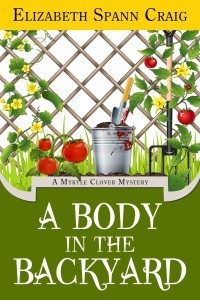
Tax time is making me a bit reflective this year. Maybe I didn’t have the time to reflect on Dec. 31st/Jan. 1 since I had a January 1 deadline…at any rate, I’m doing it now.
Tax time also always makes me think of ways I could improve. It’s great that I’m selling books—but I’ve missed opportunities along the way.
I thought I’d share my mistakes here in case you might find yourself in the same boat with some of these things. And mistakes are just opportunities to learn, after all.
Self-publishing mistakes I’ve made:
Waiting too long to venture into other formats. This is a big one, seeing the income I’ve made since July that I could have been making prior to that. Obviously, there can be some cost involved into moving into print (cover design and formatting, if you don’t do those things yourself) but audiobooks can be free. I’m a cautious person and basically waited until readers literally wrote me and asked me to put these books in audio and print format. I wish I’d moved earlier on this.
Not reserving my cover designer/formatter in advance. I’ve had to delay several releases because my cover designer or formatter was booked. Good contract labor gets booked up fast in self-pub. Ask early. Now I’m getting my covers done before I finish writing my books.
Giving readers a firm release date for my self-pubbed book too far in advance. Oh, this has bitten me several times now. When it comes to production, stuff happens. Sometimes people get sick, sometimes they have family emergencies. Sometimes they’re booked (see above). Sometimes they have internet issues. I have learned to add a week or so onto an estimated release date. Because readers will get in touch if the book isn’t out…ha! And it has an unprofessional feel to it when you miss a deadline you’ve made with a reader.
Not monitoring sales. Bad idea. If I’m having a slow month (a year ago, this was the case), then I can run a sale…play with pricing. If I don’t know I’m having a slow month, then I just get the sad little check 60 days later.
Not monitoring income/profits. Putting all our earnings in the same account as other income. This is also bad. If we’re making good income, we need to be thinking ahead: estimated tax payments in advance of tax time, money into our 401K/IRA, maybe have more withheld from our day job or our spouse’s day job. It’s no fun to pay a ton of taxes unexpectedly. And I’ve been informed that it’s very ill-advised to put your writing business income into your joint account/regular household account…it just doesn’t look great to the IRS, apparently. So maybe open a free regular checking account or credit union account that you only use for writing-related deposits. You can always transfer funds into your regular account afterward. And you can use your writing checking account to write checks for supplies, pay contract labor, etc.
Not outlining the next book in the series when finishing one. With the kind of gaps in self-publishing production that I’ve got to deal with as a hybrid writer (deadlines with the traditional publisher come first), this was a problem I’m now addressing. It takes far too long for me to get my head back into a series after working on a book in a different series.
Not having a newsletter. Readers had signed up for years for a newsletter that I didn’t ever send out. That wasn’t smart. I finally corrected this last year. If they are going to our website and taking the time to fill out the registration form for our newsletter…we should send the thing out to them.
Not doing Goodreads giveaways for the self-pubbed books. This promo thing worked out well for my traditionally published books. Why didn’t I do it for my CreateSpace Myrtle Clover books? Still haven’t done this, but need to fix that soon. It simply means ordering however many CreateSpace books I need for the giveaway and then getting it listed on Goodreads.
No website extras for readers. I’ve heard reader chatter about other writers’ websites and some of the extras they’ve seen on them. Hmm. I just haven’t gotten around to that yet. I did do a preview chapter for one of my books on the website. It would probably be helpful if I did it for the upcoming book. This is a static form of promo—you stick it up on your website once and then you’re done. Much easier than some of the social media networking we’re encouraged to do. And the one chapter I put up had readers interested, judging from feedback I received from them.
Not ramping up my self-pubbed content earlier. I seemed to view my first self-pubbed book in 2011 as a one-off.
Not venturing into self-pub until late in 2011. Yeah. Should have been early 2010. I had a book ready to go.
Not asking for my rights back (or confirming that I did hold those rights) earlier. The reason I didn’t venture into self-pub earlier (as I mention above) is because I wasn’t sure how to get my rights back to the series or the characters. The first book was traditionally published, but I wanted to self-publish others for the series. I got my rights back in a short email exchange with the publisher…took about 10 minutes for me to pen the email and took the publisher about 10 minutes back. Definitely should have explored that earlier.
There’s always room for improvement…I think last year was also the first time when I realized that this really is a small business I’m running. I have contract labor. I have legal and professional help. I’ve got research and development for books. There are areas that I’m not good at and I’m either working to learn more/do better with those or subcontract out for the things I really can’t do.
So these are the things I’d advise to keep an eye on for any writers interested in self-publishing. What tips have you got?
The post Self-Publishing Mistakes appeared first on Elizabeth Spann Craig.
February 2, 2014
Resources for the Do-It-Yourselfer
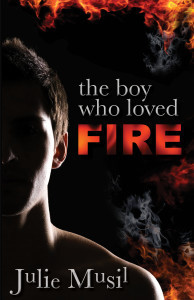
My hubby and I are die-hard do-it-yourselfers. The home we live in now sits on what used to be nothing but acres of wide open dirt and scrub oak. We brought utilities here. We built the house ourselves. Heck, I even helped paint the exterior of our house while carrying my 9-month-old son in a baby backpack. Yes, we’re crazy like that.
Call me psychotic, but I have a hard time paying someone to do what I can do myself.
When I decided to indie publish my novel, I took the same approach. Aside from hiring a freelance editor (A Little Red, Inc.) and cover designer (J. Allen Fielder), I did the whole project myself. In my opinion, editing and cover design are tasks for the pros. Some would say the same about painting the exterior of a house, but we won’t worry about that now :)
I scoured the Internet and blogs for resources. Here are some of my faves:
Indie Author Survival Guide, by Susan Kaye Quinn: Susan’s blog is a treasure trove of information, so definitely stop there first if you’re considering indie. Susan’s post about Making the Leap is what gave me the final push I needed to get my book out there. Indie Survival Guide drills deep into the nitty gritty details of what you need to do to indie publish. Formatting, paying formatters to avoid headaches, which markets to upload to and why, etc. Plus, this book is inspirational. Seriously, start with Susan.
Self Publishing Attack, by James Scott Bell: I’m a huge fangirl of Bell’s craft book, Plot & Structure. I admire his no-nonsense, regular-guy style. In Self Publishing Attack, Bell teaches indie authors how to put out a professional product, and how to treat your new venture as a business.
From Pages ’09 to Kindle Format in Minutes, by Garrick Staggs: I could’ve paid someone to format my book, but I was determined to learn how to do it myself. Sort of the “teach a man how to fish” thing. Most formatting help is geared toward Word, but I use Apple Pages. Staggs’ book helped with the language barrier. And get this—when I encountered a sticky formatting issue, I emailed the author directly (he gives his email at the end of the book for this purpose). He emailed me back and helped me work through the issue. More proof that writers are some of the most generous people I know.
Smashwords Style Guide: A great place to start if you’re formatting your own book. It’s full of useful advice on how to format a clean document. I used many of the tips in this guide until I came to a Pages roadblock. Then I picked up with the Pages to Kindle book.
Building Your Book for Kindle: Additional details on specifics such as uploading your book, previewing your book, and uploading a changed manuscript.
Forums: With every problem I encountered, someone else had already posted about it in a forum. I read the responses and was good to go. For KDP forums (Amazon), click here. CreateSpace forums (print) can be found here.
Wordpreneur Peeps: 107 Successful Indie Publishers (including Elizabeth!): If you think indie publishing can be overwhelming, or that you don’t have what it takes, I know how you feel. This book features Regular Joe writers, people just like you and me, who jumped into indie publishing. Totally inspiring.
Time is precious. Money is precious. We must use both wisely. Will this psychotic do-it-yourselfer ever pay someone to do all the work for me? I won’t rule it out. Will I ever hire a painter to paint the exterior of my home? Well, my 9-month-old son is now 16. We can paint side by side, don’t you think?
Are you a do-it-yourselfer? Have you indie published? Did you do the work yourself or did you sub it out? Please share your favorite resources in the comments!
Julie Musil writes Young Adult novels from her rural home in Southern California,

where she lives with her husband and three sons. She’s an obsessive reader who loves stories that grab the heart and won’t let go. Her novel The Boy Who Loved Fire is available now. For more information, or to stop by and say Hi, please visit Julie on her blog , on Twitter , and on Facebook .
Buy Links for The Boy Who Loved Fire
The post Resources for the Do-It-Yourselfer appeared first on Elizabeth Spann Craig.
February 1, 2014
Twitterific Writing Links
by Elizabeth S. Craig, @elizabethscraig
Twitterific links are fed into the Writer’s Knowledge Base search engine(developed by writer and software engineer Mike Fleming) which has over 23,000 free articles on writing related topics. It’s the search engine for writers.
Have a great week!
Using Amazon KDP’s New Cover Creator http://t.co/wqrhRrB0xN @nickdaws
7 Essential Questions of Plot— Do You Ask Them? http://t.co/MauI0e3OXf @JennyHansenCA
Getting Physical: Ways to Make Your Characters Come Alive: http://t.co/6qkI5L9NoX @RMFWriters
7 Lessons Learned from Half a Year of Writing Every Day: http://t.co/grXieJRZwJ @jamietr
Myst. Lov. Kitchen: Super Bowl Recipe for a Crowd! http://t.co/pBTaQ30I8M @CleoCoyle
Writer of a Certain Age: http://t.co/ENbgBQUySV @fay_weldon @NYTimes
How to Write: A Year in Advice from Franzen, King, Hosseini, and More: http://t.co/FLrngrtL4p @JoeFassler @TheAtlantic
Top Social Media Mistakes Authors Make: http://t.co/R1jrZCk2y6 @ediemelson
4 Things You Must Know About Reaching Your Writing Goals: http://t.co/APL0yz3bVw @carol_brill @womenwriters
3 Ways Authors Write in Excess (And How To Cut Back): http://t.co/D8pDM0ZfX7 @vgrefer
10 Ways to Introduce Conflict in Dialogue: http://t.co/CjDObGaPOa @amandaonwriting @writers_write Why are there so many trilogies? http://t.co/PP877igURk @jdiddyesquire @tordotcom
The importance of being able to focus solely on our writing: http://t.co/iCKsi4GbMz @flawritersconf @joannetlewis
7 Key Trends Of 2014 That Independent Filmmakers & Screenwriters Embrace: http://t.co/OXlZLGtcnp @raindance
The Magnificence of Middle Grade: http://t.co/NZY0hqY71F @kellybarnhill
Will tracking reader data make for better books? http://t.co/lpQO7lPiCN @nytimesbits @DavidStreitfeld
Using Story Beats To Increase Writing Speed: http://t.co/D0vKtZpJhU @DavidGaughran
A look at happy story endings http://t.co/ZWXWMqez5o @jamigold
Best of Both Worlds: Hybrid Authors Up Close: http://t.co/WPueUR1Twq @chuckwendig
How to Use Profanity And Other Raw Talk In Your Fiction: http://t.co/fIRKWRd4r2 @ESimsAuthor @writersdigest
My Tax Time Income Revelations and…Is Writing is the Career We Can’t Retire From? http://t.co/2MLGL8kstQ
10 Tricks For Writing Great Fight Scenes: http://t.co/KkJk4VRNUx @raynehall
Crime fiction–instances where sleuths have passed the torch to the next generation: http://t.co/4GCZ7BrQif @mkinberg
Remember to back up blogs, too: http://t.co/ZfwmbX1Dz9 @womenonwriting
Keeping it Real – Female Protagonists in YA Lit http://t.co/Zjh3ZPwxQz @JennWalkup
Crafting an Effective Beginning: Opening Image or Paragraph: http://t.co/442tsEI7zo @camillelaguire
3 Steps to Reading Harder, Better, Faster, Stronger: http://t.co/03LtP0dRJf @PeterDamien
Why Evil Overlords Need to be Competent http://t.co/jAKp8HfcVL @mharoldpage
Myst. Lov. Kitchen: Potato Casserole Revisited http://t.co/RbKOoAtUto @CleoCoyle
Audio Books First – A New Publishing Movement: http://t.co/3WrmGEsBnw @Goodereader
10 Reasons Our Hero Needs Flaws http://t.co/1Hm750ZFlu @angelaackerman
Publishing: Between Revolution and Revolt: http://t.co/v3qQUxphJt @HughHowey @Porter_Anderson @rebecsmart
How 1 writer sold his book through serialization: http://t.co/4qxjnm2sbv @rchazzchute
What makes a book a classic? http://t.co/A56KCZfWT8 @magiciansbook @salon
How to Write a Novel Based on Your Life Story–10 Tips: http://t.co/zHpC9SJGqj @helenahalme
What it Takes to Be an Author http://t.co/Y2QfacUNCM @KristenEckstein
A Characterization Case Study: Jean Valjean and Javert from “Les Misérables”: http://t.co/T79fnGaRyY @vgrefer
The most prolific author you’ve never heard of: http://t.co/ffiiTHIOuc @melvillehouse
5 Ways to Use Dramatic Irony in Your Writing http://t.co/KsQzNEsboc @JulieEshbaugh
How Can Bookstores Survive? | Savvy Writers & e-Books online: http://t.co/jgZI2wDzaw
Connecting Subplots with Each Other and the Main Story Arc: http://t.co/1cv4BpfGVl @vgrefer
A free directory of cover designers, formatters, freelance editors, and more: http://t.co/E2upLeKgPR
How 1 Famous Author Tricks Herself Into Writing Wonderful Stories http://t.co/ir9tdaIdaQ @thewritelife
Why 1 Writer No Longer Uses Profanity in His Books: http://t.co/GXi2N2t2gu @rchazzchute
An Important Tool to Make You a More Productive Writer: http://t.co/yJsw2NS4KD @DIYMFA
Evaluating Whether You’re Really Ready to Self-Publish http://t.co/HMC96qE50X @JordanMcCollum
Guidelines of Good Online Behavior: http://t.co/5P9uBbSTYR @EdieMelson
But Can’t I Send My Best Pages? http://t.co/knb3N5eAnD @ava_jae
7 Things You Can Do to Promote Your Book As Soon As You Finish the First Draft: http://t.co/lwl9C7rXk7 @sandrabeckwith
Does digital publishing mean the death of the author? http://t.co/J5XvHqbUVf @guardianbooks @richardlea
Are You Creating Your Own Personal Cliches? http://t.co/LzgPW0yl8t @KMWeiland
How To Turn Real Life Into Bestselling Fiction: http://t.co/sNfbuESSoA @RuthHarrisBooks @RomanceUniv
Myst. Lov. Kitchen: The ‘Lucy Burdette’ Daiquiri, Courtesy of @SusanMacNeal http://t.co/RJYkmRC9CJ @CleoCoyle
What Works, What Doesn’t In Book Marketing: http://t.co/1vt8iOp5t0 @badredheadmedia
6 Degrees of Agent Evolution | http://t.co/M2itUdGmKT @digibookworld
Horror–Screenwriting: How Found Footage was Murdered : http://t.co/MYRnosRWec @yomyomf
The Great Free Book Debate: Authors Weigh In: http://t.co/fclbaqc0KX @libraryoferana @mythicscribes
How a love of tabletop D&D helps video game designers tell their stories: http://t.co/CaVHJceMv0 @ColinCampbellx @Polygon
Small presses growing translated fiction’s readership: http://t.co/ggiKbprzwu @badaude @guardianbooks
3 Questions Your Professional Writing Bio Must Answer http://t.co/sJH1CtGRzh @writersrelief
Myth: to be good, writing must be hard | http://t.co/1u3BCch2Pn @deanwesleysmith
Leaving a Literary Legacy: Who Will Watch Over Your Work? http://t.co/NfKBUWFIId @annbauerwriter
5 Things Readers Want from Novelists on Social Media: http://t.co/tpeLtwBTvh @kcraftwriter
Tips for writing better endings: http://t.co/4Jv7MbzqTY @io9
How to Use Coincidence in Stories: http://t.co/2kNSWgGoyy @shalvatzis
Tips for new writers on getting started writing a book: http://t.co/VrQ1wgT3A5
Crime Fiction: A Modern-Day Look at ‘The Hound of the Baskervilles’: http://t.co/pKsyMwp5nV @kbowenwriter
Guide to Targeting an Audience http://t.co/D2ynOvjMvQ @mariamurnane
An agent on authors who worry their ideas will be stolen: http://t.co/tfv8bNNel7 @Janet_Reid
Questions to answer when creating a mythology for your world: http://t.co/gEM5iCjsp1 @rfwriters
Myst. Lov. Kitchen: Maple Cheese Scones http://t.co/T3DJcyd397 @CleoCoyle
Tools for Writing More http://t.co/Nd8VsB1R72 @SusanKayeQuinn
Creating Fully Developed Characters–writers weigh in: http://t.co/aIswHDEexB @WriterDiaries
How to Sell More of Your Fiction Without Selling Your Soul: http://t.co/pjeTG1z3V5 @storyrally
Writers Unplugged: Going Underground, for Productivity’s Sake http://t.co/RBvUcQ3fZK @GlimmerGuy 5 SF Convention Misconceptions: http://t.co/Syx9JmDIQj @petersnede
5 tips for a good narrative essay: http://t.co/8wLVhjZhWR @busyguru
5 Lies That Keep Us from Becoming Great Writers: http://t.co/o5UPf3OQMc @JoelRunyon
3 Things Authors Should Do Before Attending a Book Fair or Writers Conference: http://t.co/VyMQeaNZfO @Coach2Publish
Write First. Edit Later: http://t.co/TdVcEwgn6s @ErinMFeldman
Contract Basics: Subsidiary Rights http://t.co/dheznen44o @AriaGlazki
5 Tips for World Building in Speculative Flash Fiction: http://t.co/B5XcWMuGy2 @EDFsChronicles
Write What You DonÂ’t Know: http://t.co/HIdAHZtZuQ @litreactor
The Future of Publishing–Profit-Sharing Authors?: http://t.co/ruXYSTaDZ0 @IanKEllard @Porter_Anderson
5 Screenwriters That Ended Up Hating Their Own Movies http://t.co/ty21sEOU78 @WritingLeeman
12 Resolutions for a Writer: http://t.co/O6iqDCxkjX @LitRejections
Querying a book that already has interest from a publisher http://t.co/8KfSArBQ5i @Janet_Reid
12 Tips to Inspire Your Writing http://t.co/nRuWUKBJ3f @BlaskovicWriter
Why 1 Writer Has Failed To Write a Word in 2014: http://t.co/3M7efFM5Tp @aaronmritchey @RMFWriters How Journalism Created a Writer: http://t.co/N3Vnfgnlw7 @johnweeast
What’s hard about self-pub? Authors weigh in: http://t.co/jZO35j1hvb @thecreativepenn @Porter_Anderson @ByRozMorris @MirabilisDave
Myst. Lov. Kitchen: Frito Shepherd’s Pie and Super Bowl Boulevard from Cleo Coyle #glutenfree recipe http://t.co/xumBQsyx1I @CleoCoyle
The 15 Best Twitter Lists for Writers http://t.co/Fn7Y6yWvRK @thewritelife
How Art Can Save Your Soul | fcmalby http://t.co/GbnScMllCB @FCMalby
13 Secrets for Sizzling Dialogue http://t.co/2flwghiH61 @RayneHall
Tips for Holding a Writing Workshop http://t.co/hfQVbr92pb @emilyjeanroche
Plotting v. Pantsing: Is One Superior Over the Other? http://t.co/GObOo1Us2V @jeanniecampbell
Persistence, And The Long Con Of Being A Successful Writer « terribleminds: chuck wendig http://t.co/KnHTPy2Bwl @KameronHurley
A Self-Pub Journey: Sales and Marketing Break Down http://t.co/icitqGxiXT @Aimeelsalter
8 Ways to Handle Rejection. http://t.co/PGf9GOK3Jt @WritersBistro
Authors deserve better : http://t.co/MS0lTtPGSV @barryeisler
A Prediction on Book Visibility in 2014 | Savvy Writers & e-Books online http://t.co/YrdAjsWmky @JAKonrath
Stress less and daydream more: a writer’s resolution http://t.co/Z7Nzcfiaja @jodimeadows
How Much Do Writers Earn? Less Than You Think: http://t.co/P7myVB9l7y @pubperspectives
Narrative Setting: How To Build A World http://t.co/xBJKXV8oQm @woodwardkaren
1 Writer’s Process for Approaching Large Revisions: http://t.co/xb9OboeMQw
Understanding Patterns of Change in Fiction and Memoir: http://t.co/wphruFMr4O @writeabook {corr’d link}
6 Of The Best Pieces of Advice From Successful Writers: http://t.co/gHUPajrQQ5 @BelleBethCooper
JA Konrath responds to industry expert Mike Shatzkin’s recent analysis on the future of publishing: http://t.co/jgWPZI6M64 @MikeShatzkin
Realistic fictional settings in crime fiction: http://t.co/fxhsGqZGLQ @mkinberg
Why Don’t More People Buy Your Book? http://t.co/X3Syb3LLa1 @LyndaRYoung
The Art of Writing Copy http://t.co/IpxOoUdFDP @sjaejones
Myst. Lov. Kitchen: Orange Chicken http://t.co/LYOBPnO0Ey @CleoCoyle
A writer’s concerns about using 99 Designs: http://t.co/wNqKwzmP1T @lkblackburne
9 Keys to Creating an Effective Writing Accountability Group http://t.co/XkRRl875FQ @bigstatebiglife
Hard truths about self-publishing: http://t.co/zaPA3KBQyB @NazareaAndrews
Why authors and trad pub don’t reveal authors’ earnings http://t.co/N1TtVbDLwM @LexiRevellian
NA Alley: 5 Tips for Writing Love Scenes http://t.co/6iBM0d0aW2
Twitter Rewards Spamming Indie Authors with Trending Terms http://t.co/mgbucVrlB3 @Goodereadermike @Goodereader
10 Writing Tips From Ernest Hemingway: http://t.co/s3EtGSsSaw @boyinthehat
How to get your indie-book in book stores: http://t.co/zHDYeCnDSZ @tamzwrite
Can men write good heroines? http://t.co/yzEmZ7dKYw @SamanthaEllis27 @guardianbooks
Another Twist on Marketing your Book http://t.co/Xx36foo9xM @CarsonCanada
3 tips for writing watertight fantasy, science fiction and time travel stories: http://t.co/Ls3vwIrMC4 @nailyournovel
S Africans slow to adopt e-books: http://t.co/Gmobbnz1DH @techcentral
All the links I shared last week: http://t.co/lKuTGh1jo6 . All the links I’ve ever shared (searchable): http://t.co/tjn3OfwnLH .
Writing Filters to Use: The Finer Details Filters: http://t.co/7HTZnZyxFd @Awesome_Dawn
How to Decide Which Story to Write First: http://t.co/n0xbkau3kC @cantrelljason
50 Attributes of a Great Copywriter: http://t.co/duVpiLaRkl @jeffbullas
Myst. Lov. Kitchen: Steamed Comfort Eggs from Ovidia Yu http://t.co/ZhyuwLpPsY @CleoCoyle
The Formative Event Technique Raises Your Story’s Stakes: http://t.co/XSQu9DKJUE @marilynhorowitz
On Becoming a (Self) Publisher: (Lessons Learned): http://t.co/elceTiIugI @NickRuffilo @pubperspectives
Yes, Shakespeare used flashbacks and multiple storylines: http://t.co/1LYrIak8ya @AronsonLinda
Roadblocks and Why 1 Writer Prefers Blogging to Writing Her Book: http://t.co/AV925M9ICD
Make Your Story Richer with In-depth Knowledge of Your Characters: http://ow.ly/sXQhv @ReeseRyanWrites
7 Things 1 Writer Has Given Up To Write and Read More: http://ow.ly/sXQ0U @jamietr
Why 1 Writer Won’t Read ‘How To’ Screenwriting Articles Anymore: http://ow.ly/sXPS4 @clivefrayne @scriptmag
Reviewing Your Year’s Writing Goals Encourages Your Creative Spirit http://ow.ly/sXQsF @writeabook
To Outline or Not to Outline? A New Way of Looking at the Debate: http://ow.ly/sXQbZ @jessicastrawser @writersdigest
Killing the Top Ten Sacred Cows of Publishing: Killing a Career | http://ow.ly/sXQ6k @deanwesleysmith
The Top 5 Things 1 Writer Learned from an Editor: http://ow.ly/sXQlp @DonnaGalanti
10 Things 1 Writer Has Learned 4 Months After Publishing Her 1st Novel http://ow.ly/sXPKy @womenonwriting
A Writer Considers the Future of Self-Pub: http://ow.ly/sXQ9H @BlakeBooks
How to Set Up Google Authorship (and Why You Really Should) http://ow.ly/sXQ4o @nickdaws
6 Ways Micro-Publishing Strengthens Your Career: http://ow.ly/sXQA3 @writermama
45 ways to avoid using the word ‘very’: http://ow.ly/sXQDl @writers_write
5 Mistakes Killing Self-Published Authors: http://ow.ly/sXQdS @kristenlambtx
It’s Not Just One Book. Your Rights And How To Exploit Them: http://ow.ly/sZ91I @thecreativepenn
How To Make Life Easy For Librarians So Your Book Gets In Libraries http://ow.ly/sZ9hZ @uriel1998
Cleaning Up Your Manuscript Can Save You Money http://ow.ly/sZ9wU @CKmacleodwriter
How to Feel Confident Sharing Your Creative Work In Public http://ow.ly/sYSUa @LeRegalla
The Secret To Succeeding As A Writer: Having A Criterion For Success http://ow.ly/sYSeW @woodwardkaren
Top Tips to Make Best Use of A Blog Tour: http://ow.ly/sZa7w @cupgrease
Is There a Right Age to Read a Book? http://ow.ly/sYSNQ @tordotcom
In Britain and especially abroad, ebooks are booming: http://ow.ly/sYSun @guardianbooks
The post Twitterific Writing Links appeared first on Elizabeth Spann Craig.
January 30, 2014
Tax Time Revelations and…Is Writing is the Career We Can’t Retire From?
By Elizabeth S. Craig, @elizabethscraig
I had my appointment with my CPA on Wednesday. The appointment was in the middle of the Southern snowstorm aftermath, actually—there’s nothing like adding to the misery of taxes with a minor natural disaster, you know. I hired a CPA last year when I continued waking up in cold sweats in the middle of the night, worrying that I was doing my taxes wrong. I didn’t think I’d fit in well in tax jail. I decided I didn’t mind paying for peace of mind.
She had me painstakingly pick through my bank account and pull out every deposit from all sources…self-publishing and traditional publishing…for 2013. This was nightmarish and took the better part of an hour. But I didn’t have the 1099 from Amazon yet and she wanted to double-check all my income sources anyway, so I combed through the statements. The entries I was looking for were direct deposits and checks from Penguin (via my agent), Llewellyn (my agent doesn’t represent me with this publisher), Amazon, ACX, Smashwords, Apple, CreateSpace, and Barnes & Noble.
The amazing revelation I made was that my total income for 2013 was 68% self-publishing income. That’s with a total of 8 traditionally published books and 5 self-published books currently on the shelves (1 trad. published book is in production and 1 self-published book is in production).
Overall profits increased by 66.6% for 2013. I tried to figure out what I was doing right so that I could replicate it. But all I’ve done online is what I’ve been doing for ages…I blog here. I tweet. I Google Plus. I sometimes Facebook. I rarely pitch my books. What had changed in 2013: all my self-published books released in print. All my self-published books released in audio. I had three traditionally-published releases (although, as I mentioned, the traditionally-published income was a small fraction of my total) and one self-published release. I did a couple of Goodreads giveaways.
My accountant asked about my advertising expenses for my small business, since I wrote off $100 in 2012 for print copies of my traditionally published books for giveaways, conferences, charity basket auctions, that kind of thing. No–I spent $0 for advertising in 2013. I blushed a little when she asked me that question. What kind of a small business owner am I? But I seem to make more when I just focus on the writing stuff.
One big thing help was that foreign sales picked up dramatically last year. My foreign sales figures had been lackluster for over a year and a half. From 2011 until early last year, I never even clicked on foreign sales on the KDP page. In 2013, I saw a dramatic upswing…mainly in the UK, but also Denmark and Australia (other foreign sales were just odds and ends here and there). I did nothing to make those sales happen. I guess my visibility increased on Amazon US to the point where it just trickled through to the other markets. I really have no explanation for it.
Actually, I do have one explanation for it. I’m starting to saturate my corner of the market a little bit. I’ve given my content more reach by putting it in more formats. And I’m writing 3-4 books a year. I think I’ve got readers engaged with me—an amazing feat, considering I don’t actually interact with readers on any of my social media platforms…well, with the exception of my Riley Adams Facebook page. I’m getting many more emails and Facebook direct messages from readers than I ever received in the past.
What engages my readers are my books. And that’s the way I want it. They’re not very interested in me. A good thing, because I’m not particularly interesting. My sister joked with me one day and asked if readers were calling themselves “my number one fan.” (Stephen King reference there.) And I told her, no, not at all. Although several have written to me saying they’re Myrtle Clover’s #1 fan (protagonist in one series). And that’s exactly the way I want it.
But to sustain this book-centric reader engagement, I have to keep writing books. Which brings me to my next point—is writing a career that’s difficult to retire from? To keep our income stream constant, is the necessary visibility and discoverability dependent on regular book publication?
I think it might be. And right now, that’s absolutely fine with me. I love writing books. I’m all about books. But people I know frequently ask me if I might burn out at the pace I’m going. I say no—but there are days when I’ve got to recharge. Fortunately, there are enough writing-related tasks to switch to something else productive and allow myself to recharge a little. So I’ll contact my book cover designer or I’ll edit my outline or I’ll write a blog post or schedule updates on Twitter.
But…sure. When I think of keeping this career going and keeping my readers engaged and I think of the decades in the future—it can be overwhelming. In some ways, though, it’s a relief to me to think that my platform, which is a writer-centric platform, isn’t what’s connecting me to readers. I’m sure it’s not. My blog and Twitter and Google + have given me a higher visibility among writers, but readers aren’t finding me that way. They’re finding me through my books.
When I think of all my favorite authors…many of them (aside from some of the now-deceased Golden Age mystery writers) continue to be favorites because they regularly publish. That’s how they stay on my radar. Each year there’s an Elizabeth George book out or a Louise Penny book out or an M.C. Beaton. That’s what’s keeping me hooked… regularly released solid reads.
So those are my thoughts, just from my own data. What do you think, though? How do you feel readers are discovering your books, or how do you discover books as a reader? What keeps your favorite writers on your radar, as a reader? How can writers sustain visibility and income levels, moving forward?
Image: MorgueFile: Cohdra
The post Tax Time Revelations and…Is Writing is the Career We Can’t Retire From? appeared first on Elizabeth Spann Craig.
January 28, 2014
A Modern-Day Look at “The Hound of the Baskervilles”
by Kathy Owen, @kbowenwriter
Elizabeth invited me to share with you one of my favorite classic detective novels, Sir Arthur Conan Doyle’s The Hound of the Baskervilles. I love talking about the classics with fellow mystery lovers!
The Hound of the Baskervilles (1901-02) has been regarded by current and contemporary Sherlockians as the best of the four novels. Since its publication, it has been adapted dozens of times for radio, film, and television.
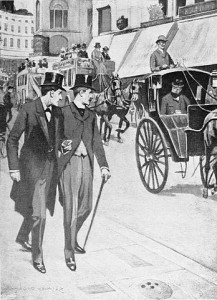
Holmes and Watson. Artist Sidney Paget, 1901. Wikimedia Commons.
Hound beginnings:
The year 1901 marked the death of Queen Victoria and saw Doyle well-established in his career: he had achieved many of his personal goals, and was considered a serious writer and popular public speaker. That year, Doyle went on a golfing holiday in Norfolk with his friend Fletcher Robinson. On a dreary, rainy day, when golfing was out of the question, Robinson passed the time by recounting to Doyle the West Country legend of a spectral hound, which gave Doyle the idea for his story. Blogger and writer Gene Lempp wrote a fascinating post on the Legend of Black Shuck which gives more detail.
Doyle subsequently traveled to the Dartmoor area to get local color for the story, which was originally not intended to feature Holmes (he had already killed off Holmes in “The Final Problem” – pitching him over the Reichenbach Falls with Professor Moriarty). According to Doyle, Holmes sort of worked his way into the story; so, rather than resurrect Holmes (although he did later, in 1903), Doyle made the story a reminiscence by Watson of an earlier undocumented case.
The Hound of the Baskervilles was serialized in The Strand Magazine (where most of the stories were serialized) over a nine-month period, from August 1901 to April 1902. It was eagerly received, and long lines formed at the publisher’s office when the next installment was due out.
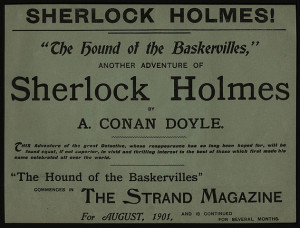
Broadsheet advertisement for The Hound of the Baskervilles, 1901. Wikimedia Commons.
There’s a lot to admire about the novel, but I’ll keep to a few interesting aspects.
Narrative strategies in Hound:
Doyle was master of the cliff-hanger. He knew how to break up the segments to keep the readers hooked. The first magazine installment, for example, ends with Watson’s sleep being disturbed by: “the sob of a woman, the muffled, strangling gasp of one who is torn by uncontrollable sorrow.” Other cliff-hangers involve a dead body, a stealthy stranger, and mysterious noises in the night.
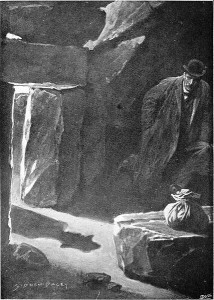
Watson lying in wait for the mysterious stranger. Artist Sidney Paget, 1901. Wikimedia Commons.
In Hound, Doyle was able to resolve the narrative difficulty he’d had in two earlier full-length Holmes novels: how to explain the complex and lengthy series of events that lead up to a crime without the use of long flashbacks or tedious explanations that interrupt the story. Instead, Doyle used different narrative voices: those of the client, a 17th century manuscript, Watson, and Holmes, who later relays his own account of the time when he and Watson are working the case separately.
The separation of the Holmes/Watson team is unusual as well. Without Holmes on the scene to guide him, Watson has his chance in the limelight as a detective. It is a role that weighs heavily on him, however. The reader shares the feeling of vulnerability in Holmes’s absence.
Gothic elements:
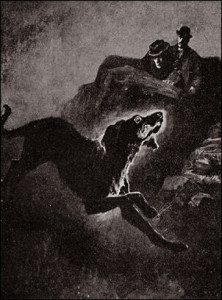
Artist Sidney Paget’s otherworldly hound. Image via wikimedia commons.
The novel’s Gothic horror story trappings make it an unusual setting for a detective story: a family curse, a dark, primitive moor, a seemingly-supernatural hound, a black-hearted villain. There are lots of “thrills and chills.” But it’s a detective story through and through, because the Gothic is not its solution. There is a rational explanation for everything. Some scholars posit this is why Doyle instinctively felt that Holmes belonged in the story.
Psychoanalytic facets of the novel:
During the time that Doyle was writing the Holmes stories, Freud was developing his theories of the unconscious mind and repression. Writers such as Conrad, Stevenson and James wrote symbolic stories in which the source of evil existed within the mad soul and had to be restrained by the intellect. The Hound of the Baskervilles treats the problem of human evil from a psychological perspective rather than a metaphysical/ supernatural one. Scholars like to read the wild, lonely, treacherous moors as symbolic of the repressed unknown unconscious mind, uncivilized and barbaric. Using this interpretation, the moor would act in conjunction with characters in the story (including the neolithic savages, the original inhabitants of the moor) to depict the unconscious, dark side of the human soul, or the primitive part of man existing beneath the civilized veneer, if you will.
There’s more I could say about this (we haven’t even touched Jungian theory), but we want stuff to discuss in the comments section! I hope you’ll give The Hound of the Baskervilles a second (or first) look.
Bio:

K.B. Owen taught college English at universities in Connecticut and Washington, DC and holds a doctorate in 19th century British literature. A long-time mystery lover, she drew upon her teaching experiences in creating the Professor Concordia Wells mystery series. The first book, Dangerous and Unseemly, was published in early 2013.
The second book, Unseemly Pursuits: A Concordia Wells Mystery, has just been released:
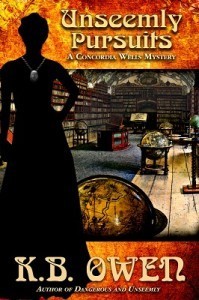
A deadly secret that won’t stay buried…
It is the fall of 1896, and Miss Concordia Wells is hip-deep in the usual tumult of a lady professor’s life: classes, clubs, student pranks, and the unending drama generated by the girls she lives with on campus. Complicating this normality is the new Lady Principal, whom the students have nicknamed “the Ogre.” The woman seems bent on making Concordia’s life miserable.
And then there’s the exotic spirit medium, Madame Durand, who has befriended Concordia’s mother and has started a “Spirit Club” on campus. Madame’s prognostications of doom are at first only mildly irritating – until events take a sobering turn. An ancient Egyptian amulet donated to the college mysteriously disappears, the donor is found murdered, and his daughter – Concordia’s best friend – confesses to killing him.
Desperate for answers, Concordia unravels a 20-year-old secret, closely guarded by men now dead. But such secrets can be dangerous for the daughters left behind, including Concordia herself. Can she make sense of the mystery that has bound together their fates, before it’s too late?
Unseemly Pursuits is available through these venues:
Kathy’s also hosting a giveaway! A randomly-selected winner from the comments section of each guest post on her blog tour (comments up through March 6, 2014) will receive a free e-copy of Unseemly Pursuits. One grand-prize winner from all of the ebook winners will receive an Unseemly Pursuits swag kit! This includes a mug, JellyBelly tin, keychain, and two signed paperbacks: her first novel in the series, Dangerous and Unseemly, along with Unseemly Pursuits. (If the grand-prize winner lives outside the U.S., she or he will receive a $50 Amazon gift card instead, because of the cost of shipping).
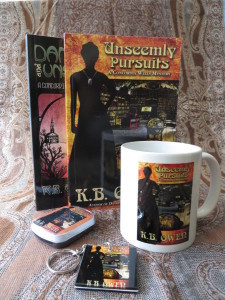
The post A Modern-Day Look at “The Hound of the Baskervilles” appeared first on Elizabeth Spann Craig.
January 26, 2014
My Process for Approaching Large Revisions
By Elizabeth S. Craig, @elizabethscraig
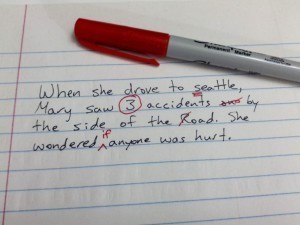 I received an email last week from a writer who is feeling a little overwhelmed by the revision process and asked if I’d written any posts that helped to sort of sort through revision in an organized way.
I received an email last week from a writer who is feeling a little overwhelmed by the revision process and asked if I’d written any posts that helped to sort of sort through revision in an organized way.
And my first reaction was, besides completely understanding why anyone would feel overwhelmed, was: “Oh sure, I’ve got gobs of blog posts like that.” But…no. Although I talk a lot about my need for revision and stuff I’ve had to fix in the past, and the fact that I don’t edit while I draft–I had no posts at all about how I organize and approach revision. So I’ll correct that now. And, looking at my process below, I’m thinking that one reason I might not have outlined this before is because it so closely resembles my process for writing a book that maybe I thought I’d repeat myself.
This is a process for someone who really, really needs a process or has become frozen because there is so much to do and she doesn’t know where to start. It could work for someone with really limited time and a demanding day job. Or someone who has tried other methods without success.
First off:
Brainstorm a list for your revision.
This may be a humdinger of a list, but work on it a little every day. Maybe you already have a list of notes to yourself about manuscript problems…this is a good time to organize the bits into a master list.
Everything goes on the list. The stuff you worried about in your book. The feedback you got from your editor/beta reader/critique group. It’s a master list.
Brainstorm all the global problems you recognize in your book. You might know immediately what these are. If you can’t put your finger on them, think about lack of conflict, whether the protagonist is taking charge or observing, character development, character growth, flat dialogue, and character goals/motivation.
Brainstorm all the smaller mistakes you want to watch for. Be thinking about things like: repeated words (echoes), continuity errors (character’s hair color/outfit changes in same scene), POV problems, pacing (some scenes too rushed? some scenes too slow?) too many adjectives or adverbs, dialogue tag issues, varied sentence structure, bumpy scene transitions, etc. Weak word choice–sometimes I’ll double-check that I’ve used words like felt, very, look, started to, think, really, put in a smart way.
Brainstorm all the additions you want to make to the manuscript. These might be chapter breaks, descriptions, setting description, added scenes that add conflict or develop character, etc.
Brainstorm all the deletions you know you want to make to the manuscript. These might be instances of backstory, dull dialogue, or meandering scenes that don’t further the story.
Then: break headings on your list into smaller tasks of things to do/address. See how many tasks you can break each area down into. So maybe you received some beta reader/editor/crit group feedback: Help make main character more sympathetic and likeable. You could change that to add in a pet-the-dog/save the cat moment near book’s beginning.
Martin seems too flat as a character could have a few to-dos: Brainstorm Martin’s backstory and what he fears most/wants most. List why Martin is important to the protagonist and ways to make him more so. How does Martin grow during the story?
Some of these things are going to take only a few minutes (word searches for frequently repeated words or potential problem words). Some will take longer (continuity errors, POV, etc.). If you’ve broken down some of your bigger tasks into much smaller, manageable to-dos, though, you’ll have bits you can accomplish even in small amounts of time.
After you finish with your list, work on it as you have time. If you’re forgetful like I am, carefully mark off each item when you’ve finished. Mark on your document where you left off, if you’re working on a read-through. I use Word’s Track Changes or Comments feature.
Continuity errors seem to take the longest amount of time for me to catch because I usually have to jot down notes about what day of the week the story is on, a character’s eye color (can prevent this if I make a style sheet as I write the book!), etc. Read through the book for continuity errors (notepad beside us), POV, and transition problems.
If you come across additional problems as you go, add them to your to-do list, also breaking them down into smaller tasks.
Double-check yourself. Check your list again.
Do a final read-through to make sure all your deletions, additions, and word changes make sense.
Call yourself done and reward yourself somehow. Maybe by starting on that next book that was tempting you the whole time you were plodding through your revision?
I’ll add here that now, although I still do need a list to help me keep track of changes I need to make, I don’t *have* to make one as extensive as the one above…now it’s more rote because I’ve done it so many times. This is more if you have a heckuva revision on your hands, feel overwhelmed, or need to apply some real organization to your project to help stay on track and motivated.
There are so many ways to approach a big revision. What are some of your tips?
Image: MorgueFile: jppi
The post My Process for Approaching Large Revisions appeared first on Elizabeth Spann Craig.



